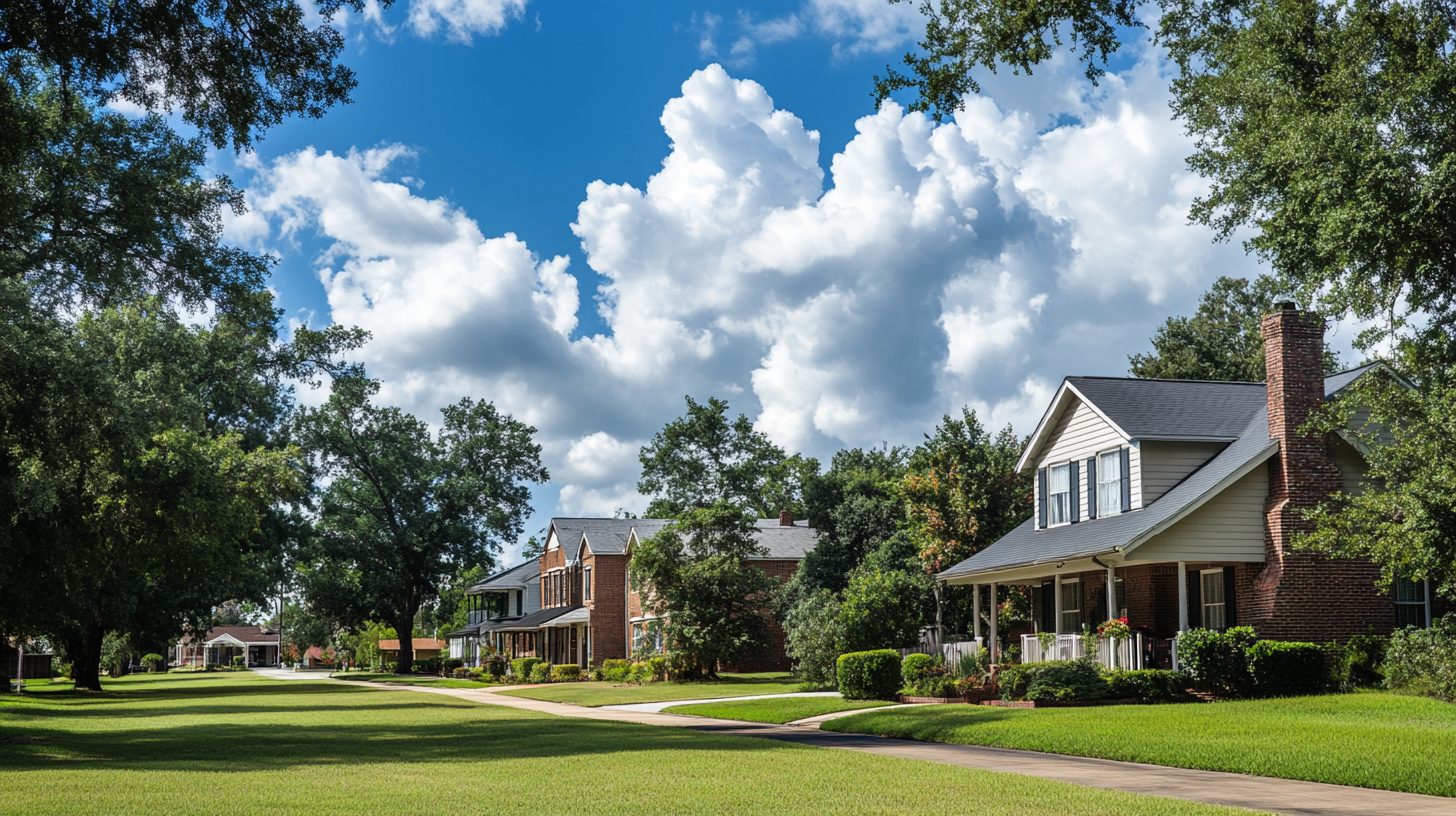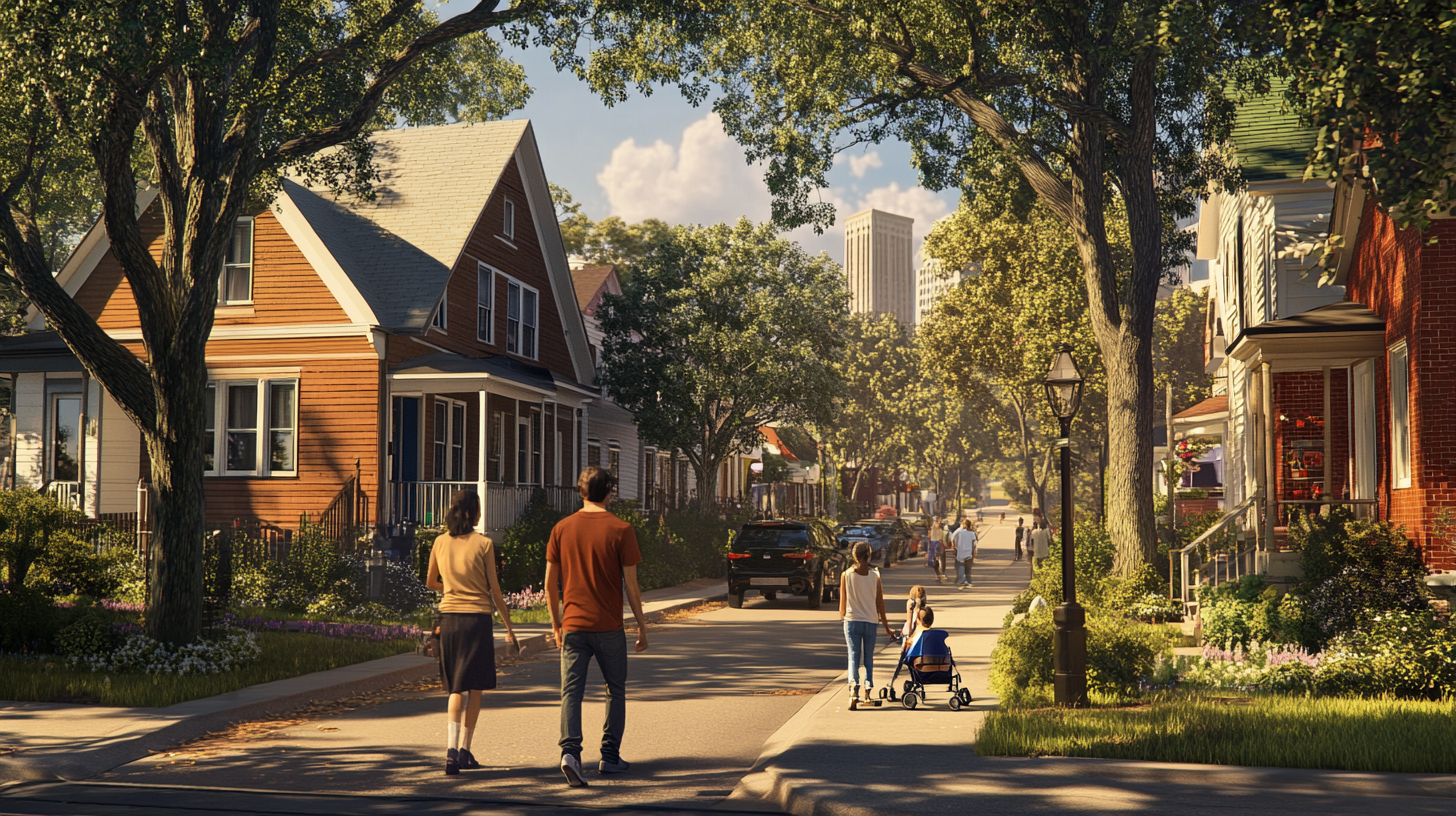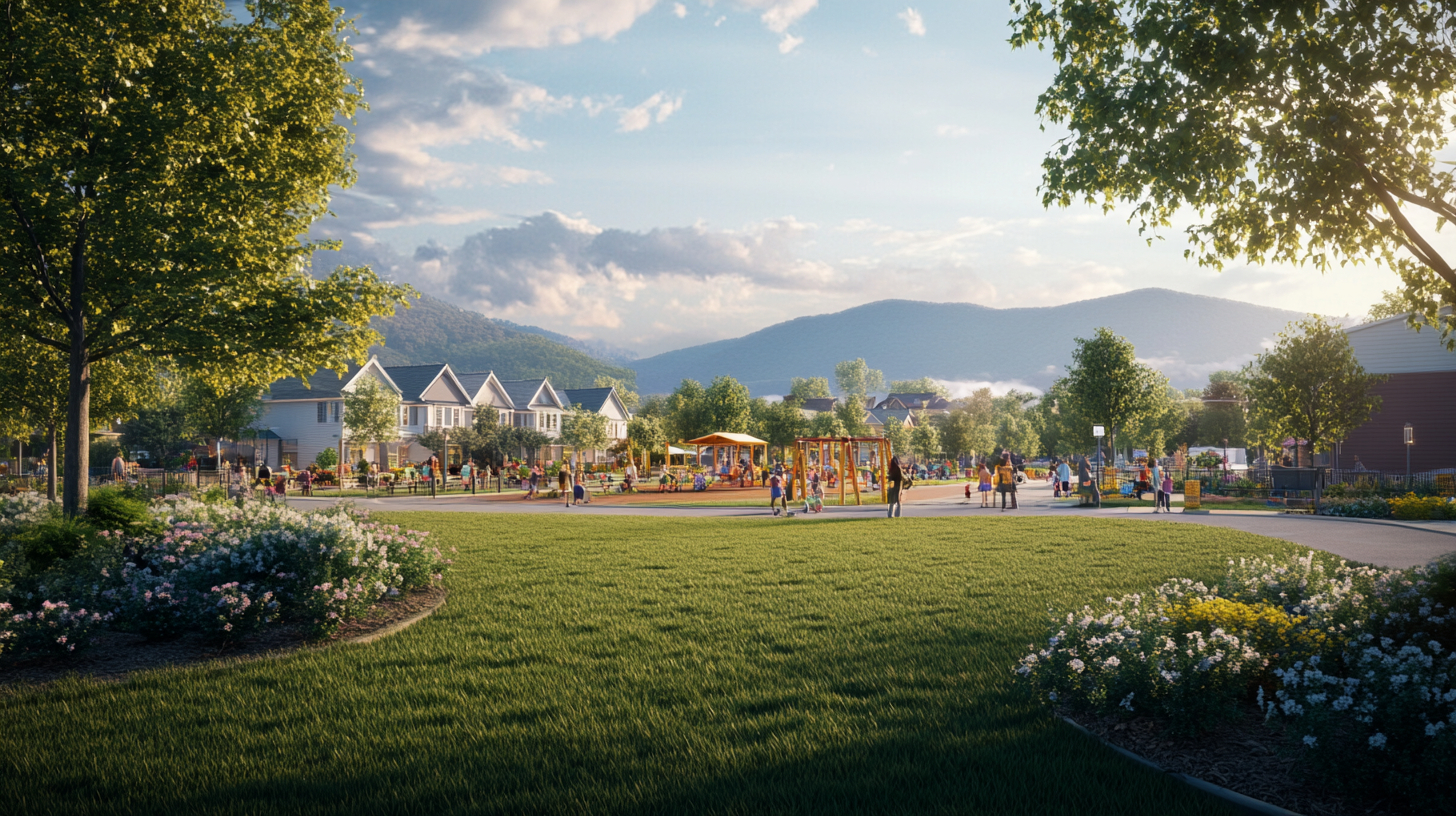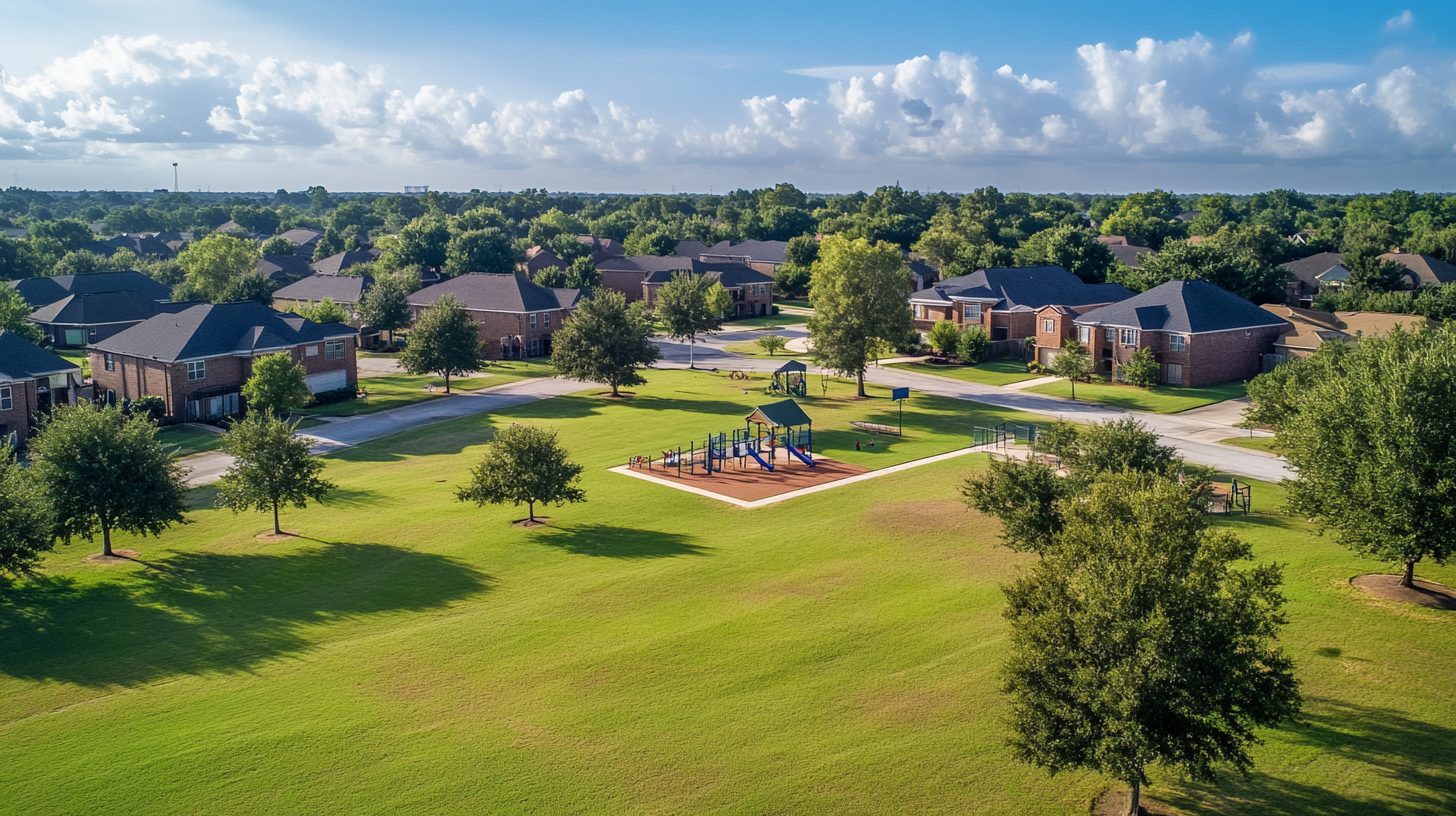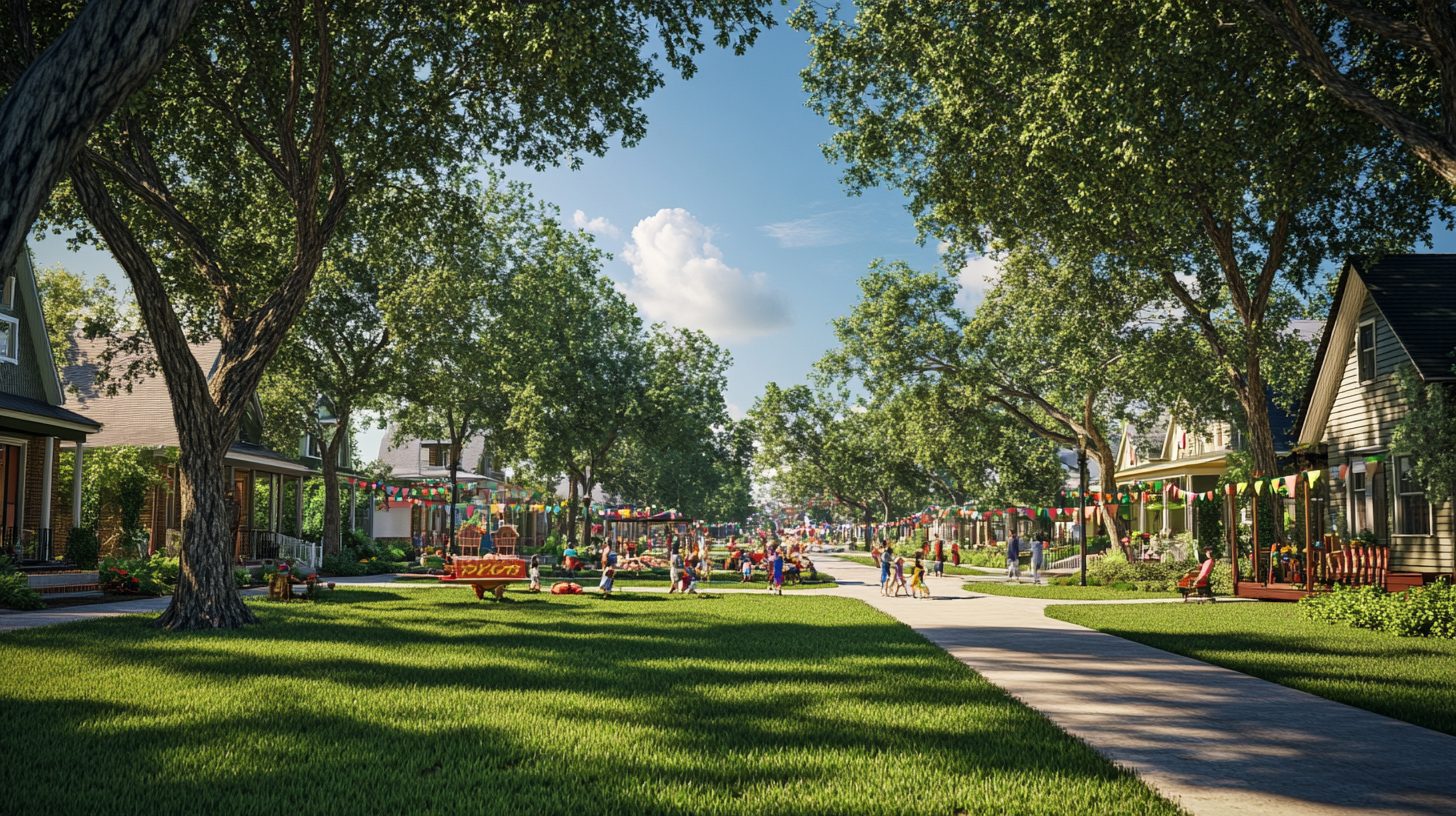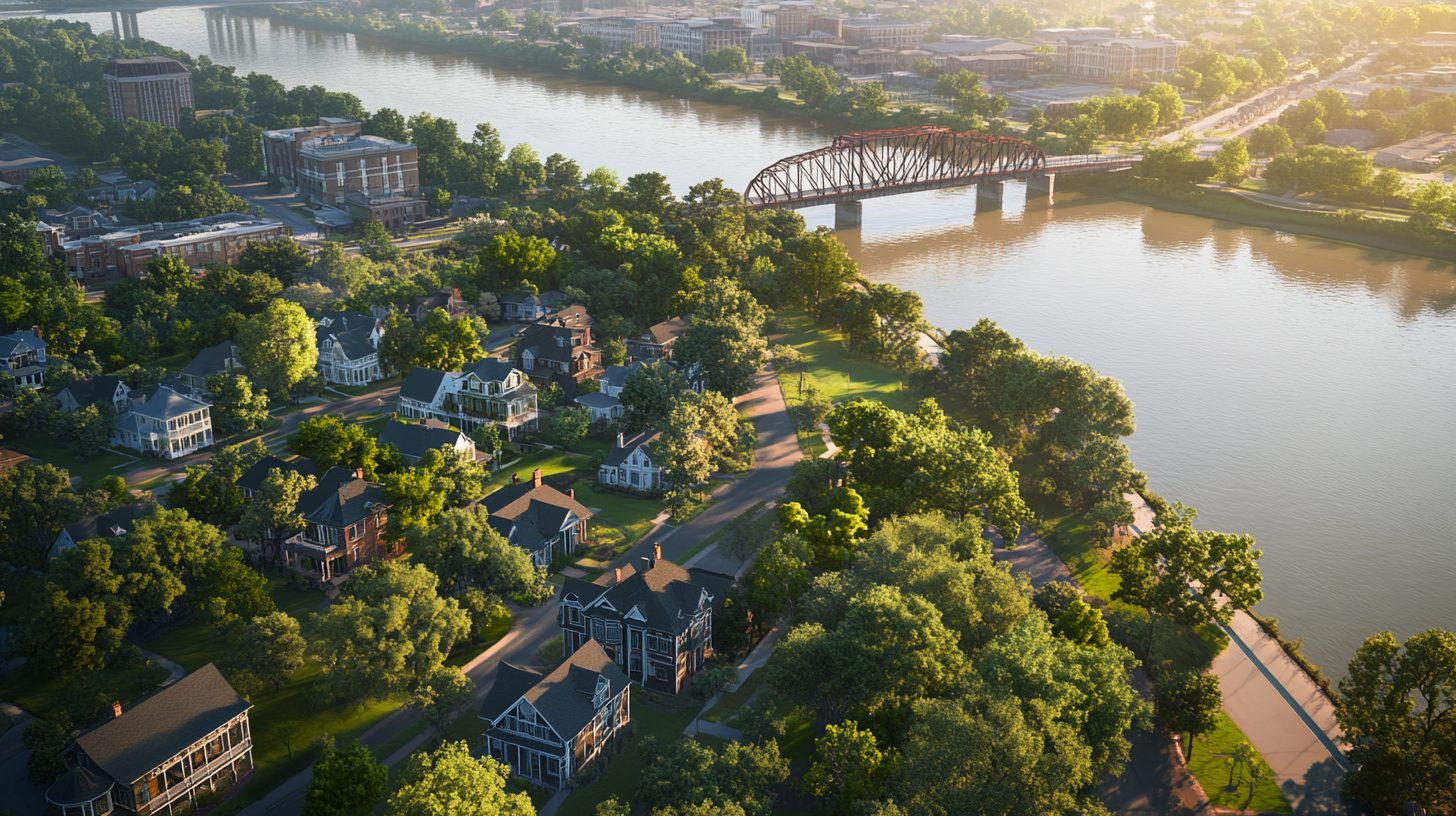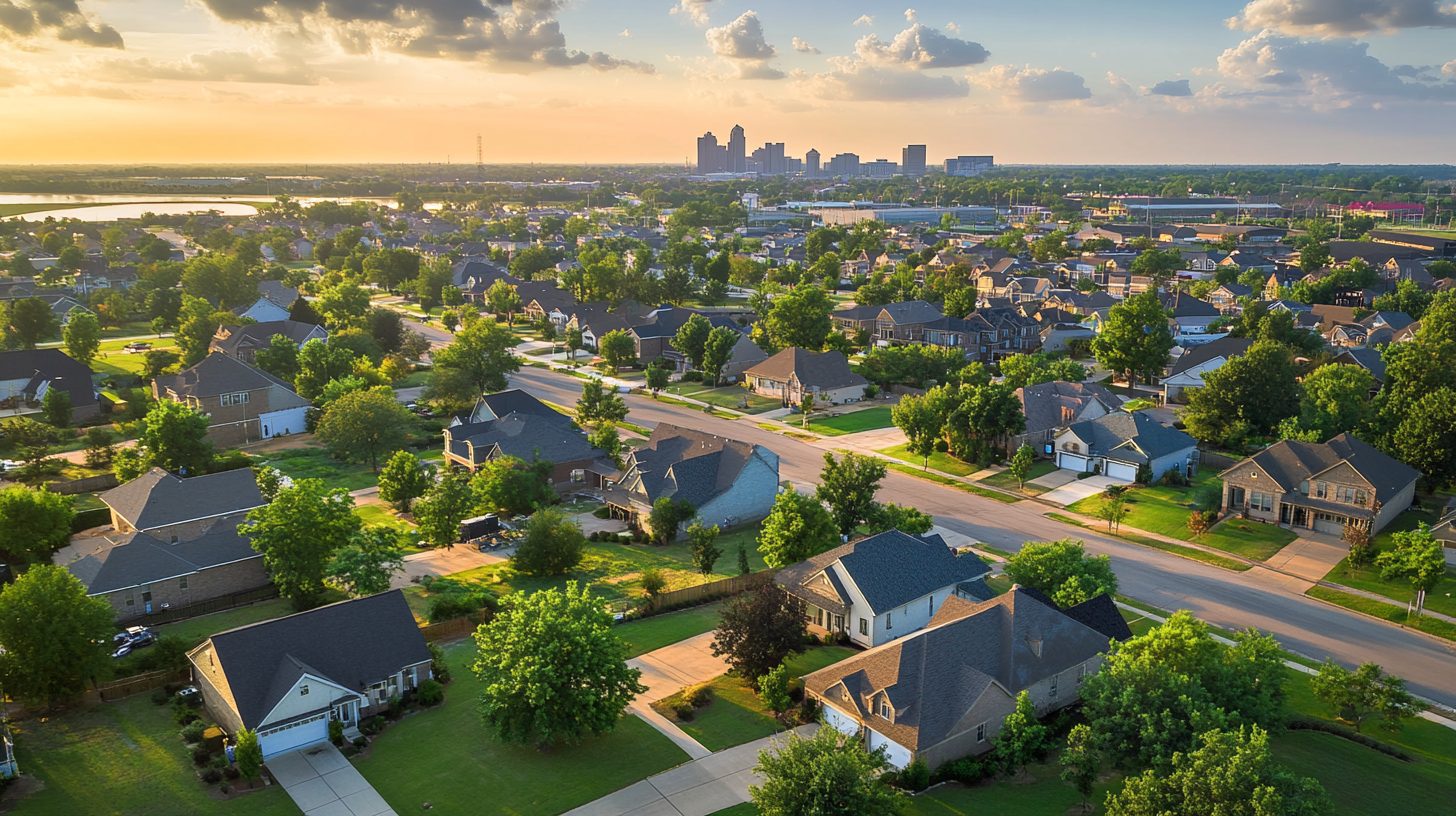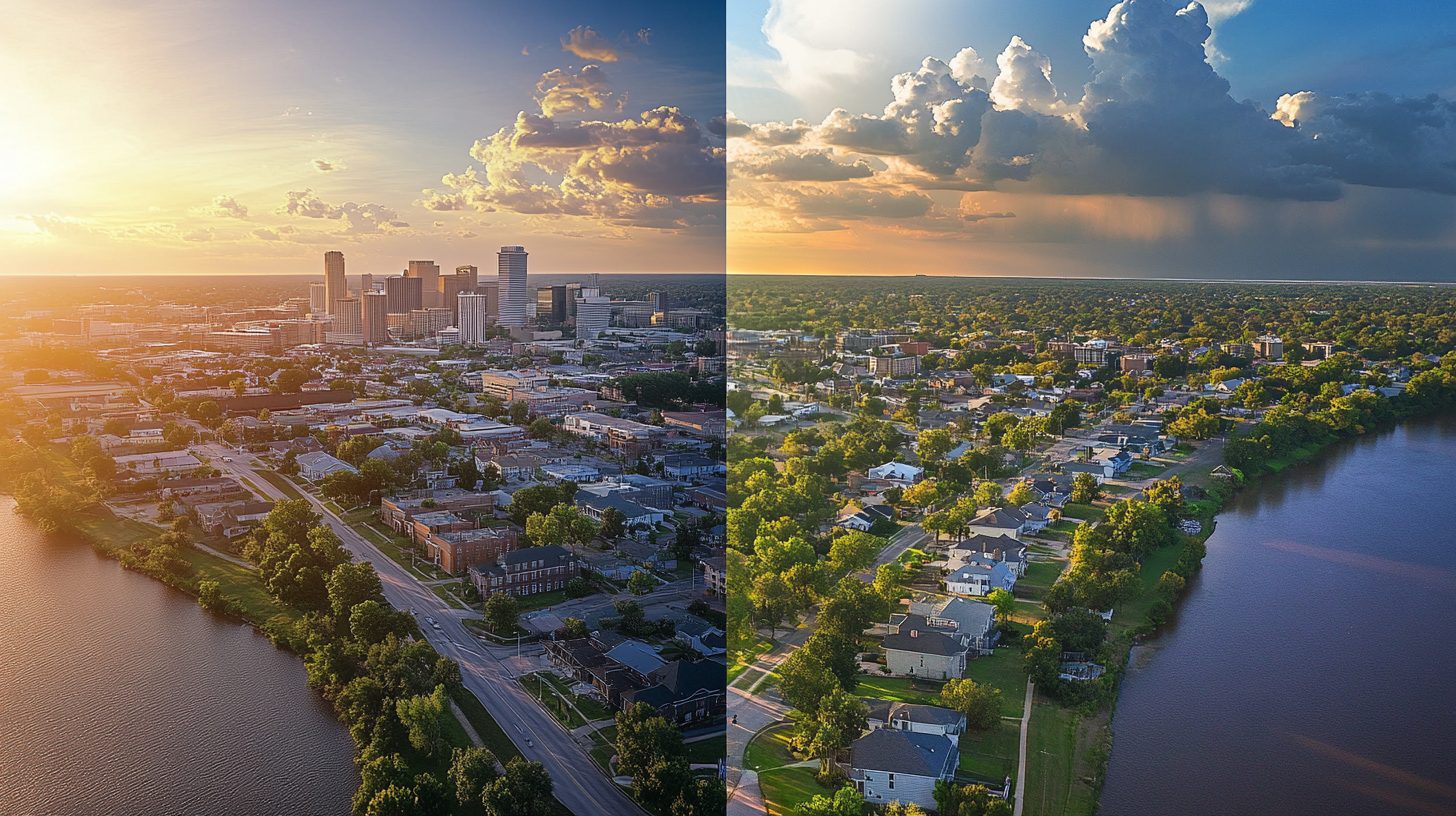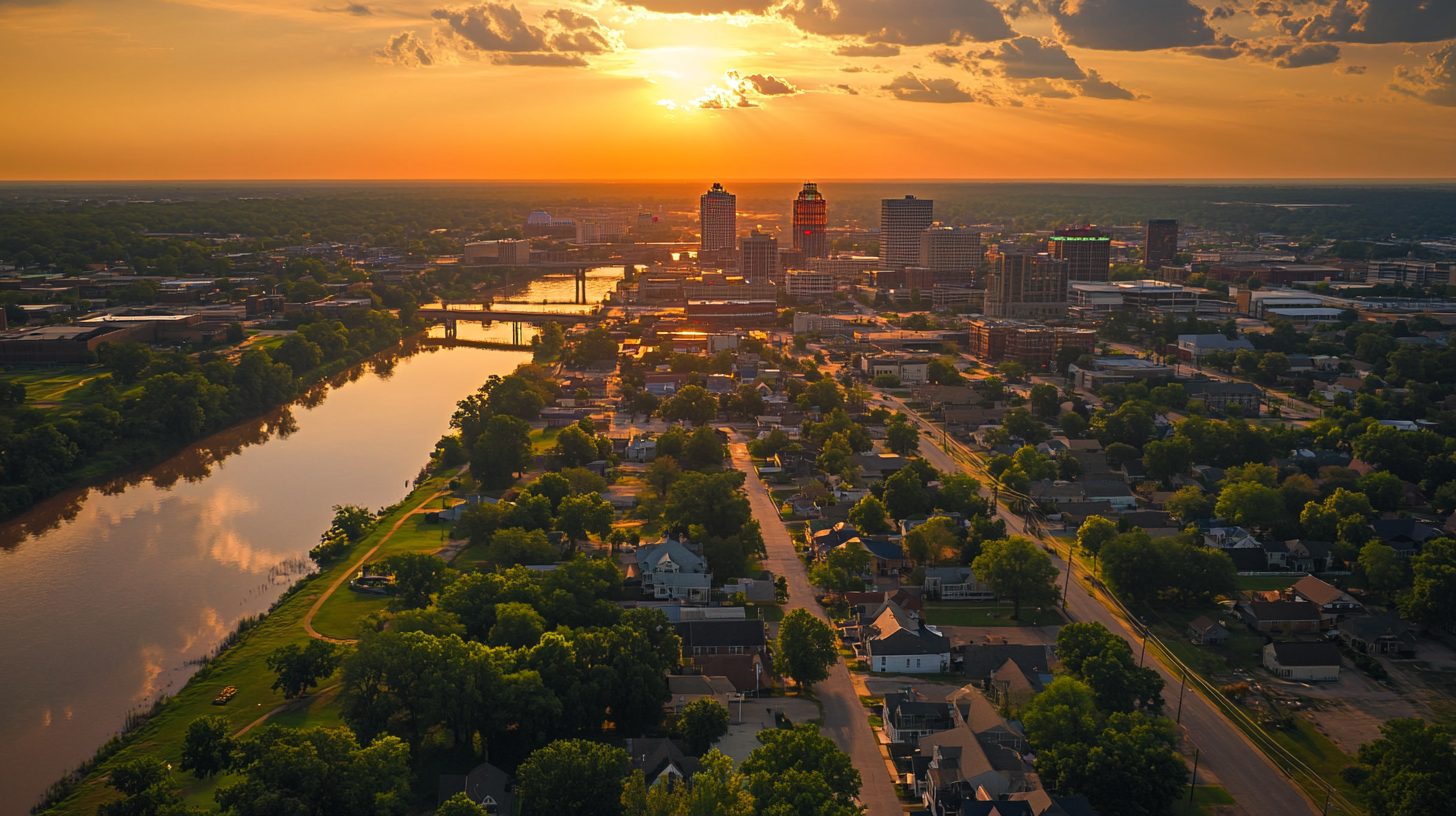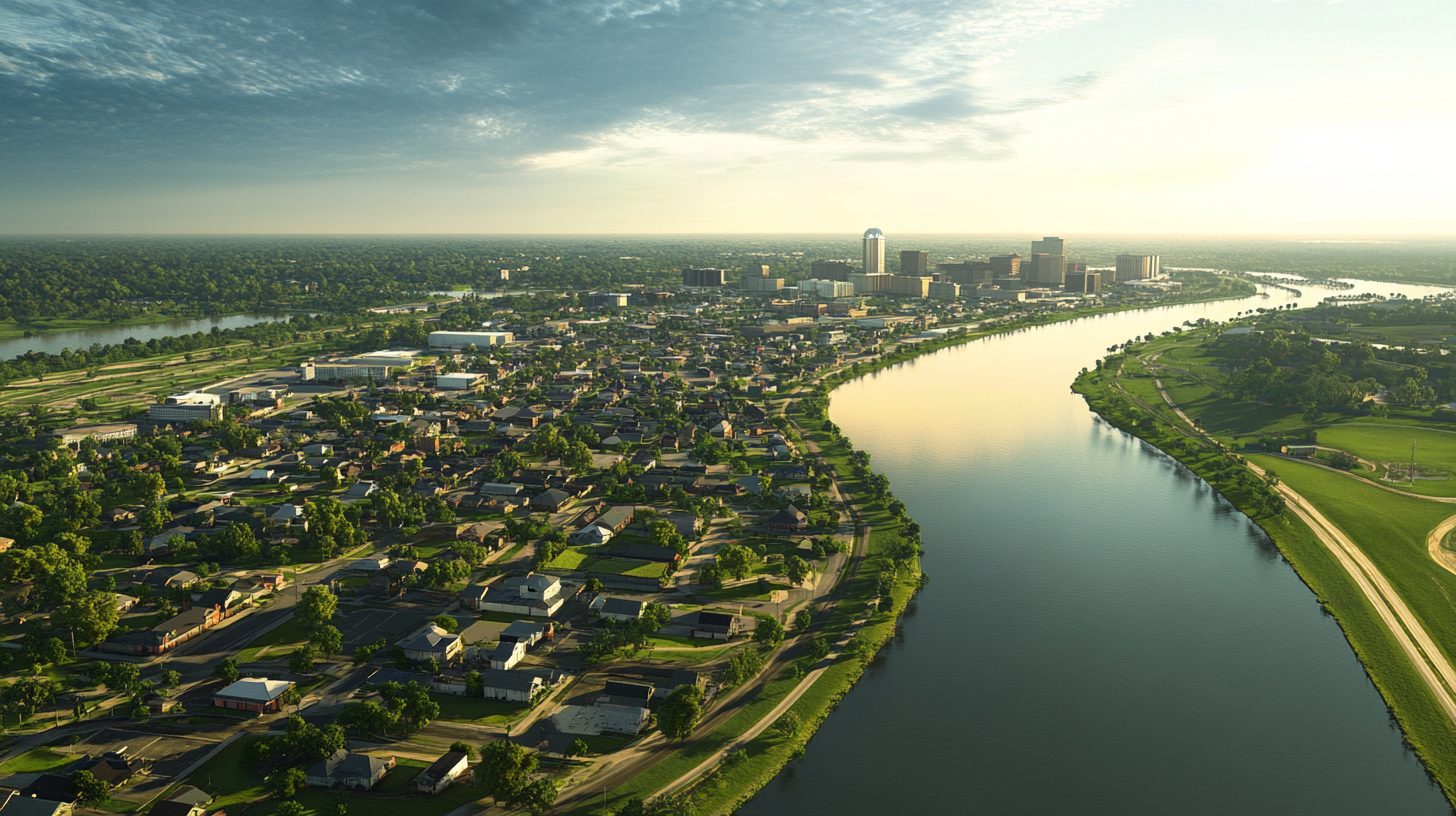Kicking Things Off in Bossier City
Bossier City sits right across the Red River from Shreveport, forming a lively duo that can keep you on your toes. It’s not just another Louisiana spot—it’s a place jam-packed with welcoming folks and local flavor.
So many families here have deep roots, but there’s also been a wave of newcomers looking for more space without the big-city bustle. I gotta say, that combination makes it feel friendly but always evolving—like you’re part of something real.
Barksdale Air Force Base sits close by, fueling local businesses and housing demand. And with casinos and retail hubs in the area, opportunity isn’t in short supply.
How long you park yourself in that house deeply influences your equity, your cost savings, or your chance to upgrade. This is no casual choice.
Recommended Timeframes for Selling in Bossier City
I’m sure you’ve heard that “five-year rule”—the idea that you should own your place at least half a decade before selling. Even so, Bossier City doesn’t always stick to mainstream rules, because local home prices have a habit of climbing faster than you’d think. That means you might build equity sooner than the typical U.S. homeowner if you snagged your property at the right time. But is it wise to cash out immediately? Maybe. I’ve tested the quick-flip approach, and sometimes it works, but keep in mind that short-term capital gains taxes can bite you. Plus, if you’ve renovated and upgraded your home, you might not yet have recouped your investment. So, yes, the standard five-year timeline is helpful, but weigh in local appreciation trends and your personal situation before jumping for the “For Sale” sign.
Market demand here can be a bit unpredictable—especially during those sticky Louisiana summers. Some folks say they won’t move when it’s blazing hot, but ironically, there’s sometimes less competition during these sweaty months, so you can catch eager buyers if your timing’s right. On the flip side, the cooler fall and mild winter might see a more balanced market, with each listing taking a little longer to move. But get this: Bossier City’s property taxes are relatively moderate compared to other parts of the country, which can feed buyer confidence. Yet if you’re thinking about selling a home you’ve owned for fewer than two years, be aware of potential tax hits on your profits. You gotta weigh how those factors—weather, buyer demand, and taxes—line up with your personal schedule and financial goals.
Your personal situation might overrule every real estate theory in the book. Are you planning on relocating for a new job at the tech center in Shreveport or maybe heading overseas for a military assignment? Then you’ll want to consider how quickly you need to free up your finances. Or maybe your family’s expanding—hello, baby number two—and your cozy starter home is feeling more like a shoebox every day. In that case, waiting around just to meet a textbook “time in home” requirement may not serve your family’s immediate needs. At the same time, if you’ve built up a cushion of equity and have a stable gig here in Bossier City, you could wait for a prime market moment. The real key is matching your milestones to the market—without sacrificing what matters most to you.
Let’s not skip over the dollars and cents. When you sell, you’ll likely run into agent commissions, title fees, escrow charges, and anything else that might pop up as a closing cost. And don’t forget any outstanding mortgage payoff or potential prepayment penalties—some lenders like to sneak those in. Now, if you haven’t built enough equity to cover these charges, you might find yourself writing a check at closing instead of cashing one. Ouch. So what’s the break-even point in Bossier City? Well, it’s tied to your home’s value and how quickly that value has jumped since you bought. Around here, homes can be priced anywhere from starter levels in the low $100,000s to more upscale properties pushing $300,000 or more. The sweet spot for a break-even usually shows up after a couple of years—maybe three—if the market remains steady and your property appreciates enough. Think of it this way: If the numbers make sense, and you walk away with some profit, your timeline might be just right.
Local Housing Trends Influencing Your Decision
Looking ahead to 2024 and 2025, don’t be surprised if inventory remains on the slim side. Bossier City’s steady job market and relatively affordable properties have kept buyer activity humming, even when interest rates have inched upward. Sometimes, that means homes get snapped up as soon as they hit the market, especially those in move-in-ready condition. Yet if rates climb any higher, some buyers might hold off, which could soften competition. That said, there’s been chatter about new residential developments popping up near shopping corridors, possibly boosting supply in pockets around town. Even so, keep an eye on how quickly homes are going under contract—those numbers can speak volumes about the local appetite for real estate. If things are moving quickly, you might be able to push your listing price a bit higher.
To paint a clearer picture, the median home price in Bossier City currently hovers in the mid-$180,000s, but certain zip codes can climb way higher. Over the last year or so, the average days on market has swung between 30 to 45 days—though some homes get scooped up faster when they’re priced right. As for price per square foot, you might see anything from $100 to $120 in established neighborhoods, with new construction edging higher. Buyers around here often look for updated kitchens, open-concept layouts, and that coveted two-car garage—so if you have them, you’re in the game. And while these numbers can shift, they provide a decent baseline. If your home fits neatly into these common ranges, you’ve got a good starting point for setting an asking price.
All those stats—ranging from days on market to the price-per-square-foot sweet spot—paint a story about timing. If inventory is low and demand is high, you might want to list right away, especially if your property has the features buyers crave. But if interest rates are in flux or new developments are about to flood the market, it could pay to wait it out a bit. Sometimes snagging an extra month or two helps you tap into a fresh wave of buyers who are finally getting pre-approved. The real question is how flexible you can be. If you need to relocate in a hurry, your “strategic window” might be more about personal deadlines than market science. Either way, keep your eyes on local data—Bossier City trends can shift quickly—and align your game plan with what’s happening on the streets.
Bossier City isn’t a one-size-fits-all market. You have areas like North Bossier, known for newer homes and super easy interstate access. Or perhaps you prefer the established feel of South Bossier, where older properties sit on bigger lots—often with lower property taxes. And let’s not forget the up-and-coming developments near Airline Drive, brimming with shops, dining, and convenient schools. These enclaves usually draw families, so if you own in one of these hotspots, you might see faster sales and firmer offers. Actually, I’ve seen certain listings spark multiple-offer showdowns within hours of going live, especially if they’re staged well and priced fairly. The charm here is that you can find something for almost every kind of buyer—first-timers, move-up families, and even retirees looking for smaller footprints. Ultimately, zeroing in on neighborhoods with strong amenities and well-regarded schools can give you the upper hand. If you’re in one of these prime pockets, you’re already closer to that sweet sale.
Finishing Touches Before Listing
At the end of the day, your reasons for selling often outrank market theories. Balancing when you need to move with the equity you’ve built can be a delicate dance—but totally doable.
Local stats keep you from making wild guesses. If the numbers say buyers are hungry and your home checks the right boxes, ride that wave. If not, holding off could pay dividends.
Factor in your costs—commissions, repairs, and maybe a fresh coat of paint. Even if your place is practically perfect, buyers will likely push for concessions somewhere. Be ready for a little back-and-forth.
You never know when that equity might double-time your profits. Checking in with a local real estate pro or lender keeps you ahead of the game—and less likely to regret your timeline.
The 2025 Bossier City Real Estate Market: A Closer Look
Jumping into 2025, there’s cautious optimism brewing around Bossier City’s housing supply. A few new subdivisions are rumored to break ground, which could slightly loosen the tight inventory we’ve seen. Even so, there’s no guarantee we’ll see a massive surge of listings. Many homeowners who refinanced at lower rates might choose to stay put, limiting what’s actually on the market. Meanwhile, potential sellers eyeing a move are waiting to see if interest rates inch down or if local job growth surges, giving them a chance to sell high. And let’s be honest: predicting the real estate future is a bit of a guessing game. But if you’re considering selling in 2025, keep an ear out for news on new builds and major corporate moves—they can shake up the supply side quicker than you’d think.
As 2025 rolls in, forecasts suggest the median home price could inch toward the $190,000 mark—though hot pockets might bust right through that ceiling. Days on market might hover around five weeks, but well-priced listings could vanish in days. Neighborhoods near Barksdale Air Force Base remain investor favorites, given the constant flow of military personnel. Then there’s the blossoming East Bank District, full of revitalized spaces that cater to folks craving a walkable lifestyle. If you’re gunning for a smart investment, don’t overlook those borderline areas that are just starting to see new builds and commercial development. Sure, you might snatch up a property at a lower cost now, then ride the wave of appreciation. Just remember: timing and location can shift quickly, so keep tabs on local data to find your best shot.
Investors keep a sharp eye on Bossier City because of those stable rental returns, especially around the Air Force Base. Vacation rentals aren’t huge here, but they do exist near popular riverfront spots. If you’re eyeing a flip in 2025, snagging a fixer-upper in an up-and-coming area might grant you a solid ROI, provided you can manage renovation costs effectively. That said, some homes may need only cosmetic updates to fetch a higher resale price. And with corporate expansions rumored in the region, there’s a chance tenant demand could rise, too. Just be cautious about overextending yourself with too many properties at once. Nobody wants to get stuck in a buyer’s market holding a half-dozen flips. The bottom line: keep your ear to local chatter, watch economic indicators, and don’t be afraid to pivot if the playing field changes.
Now, if you’re set on listing in 2025, think about starting your pricing strategy just below the competition to lure buyers in. Then, let market interest drive up offers, rather than scaring everyone away with a sky-high figure. Also, keep a close eye on interest rates—if they drop, buyers might jump off the fence and come knocking in larger numbers. On the flip side, a rate hike could slow the pace. So, maybe consider listing early in the year before any speculated rate changes or after a major local employer announces new hires, which can energize demand. And don’t forget the power of a well-timed open house. If you see an uptick in weekend house-hunting—like right after folks get their tax returns—capitalize on that momentum. I’ve known agents who would even coordinate with employers’ pay cycles to ensure potential buyers have fresh funds. In the end, it’s a dance between setting a fair price, choosing the right time, and making sure your property wows prospective buyers from the moment they step inside.

